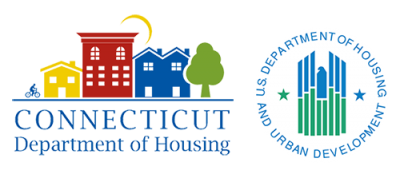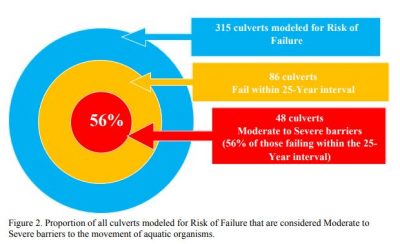About the Project
The “Municipal Resilience Planning Assistance Project” combined science, policy, and planning at the state and local levels to address the resilience of vulnerable communities along Connecticut’s coast and inland waterways to the growing impacts of climate change. The purpose of the project was to develop tools for municipalities to assess vulnerable infrastructure to inundation by river flow, sea level rise, and storm surge in the next 25-50 years. This work was made possible through a Municipal Resilience Planning Assistance grant from the State of Connecticut Department of Housing CDBG-Disaster Recovery Program and the US Department of Housing and Urban Development
An public event entitled, Creating a Resilient Connecticut: A CIRCA Forum on Science, Planning, Policy & Law was held in May 2018 to provide information through presentations and posters. A recording of the event includes a welcome by CT DEEP Commissioner Rob Klee announcing news of recent climate legislation and a keynote address by Harriet Tregoning entitled, “Connecticut’s Future in a Disaster-Prone World”.
CIRCA partnered with CT DEEP, UConn faculty, CLEAR, and CT Sea Grant to develop information and tools for this project organized under the following topics: 1) sea level rise and coastal flooding, 2) inland flooding, 3) critical infrastructure, and 4) policy and planning. Boxes on the right feature some of the important products from this work.
TOOLS
Sea Level Rise Projections for Connecticut
CIRCA recommends that Connecticut plan for the upper end of the range of values projected of sea level rise or up to 20 inches (50cm) of sea level rise higher than the national tidal datum in Long Island Sound by 2050 and that it is likely that sea level will continue to rise after that date.

Connecticut Sea Level Rise and Storm Surge Map Viewer
CIRCA's new map viewer shows different sea level rise projections (1 foot and 20 inches), above a Mean Higher High Water (MHHW) to illustrate that planning should anticipate up to 20 inches of sea level rise by 2050 along the Connecticut coastline and adjacent inland. CIRCA’s report on Connecticut sea level rise provided the basis for these projections.

Additional Tools
- 2016 Aerial Infrared Photography : aerial photography is an effective tool for monitoring and assessing the natural and man-made features of the Connecticut shoreline. CT DEEP's Land and Water Resources Division utilizes aerial photographs in regulatory, land use planning, and resource management activities and has conducted coastal aerial photo flights at roughly 5 year intervals since 1974. Updated in 2016 aerial photos can be found online through CT ECO.
- Online Enhanced Tidal Wetland Layer (search for "CT Wetlands"): an inventory of data for estuarine, marine and freshwater emergent tidal wetlands compared with 2016 aerial photography
- New Planning and Visualization Tools for Sea Level Rise
Barrier Beach Diagram 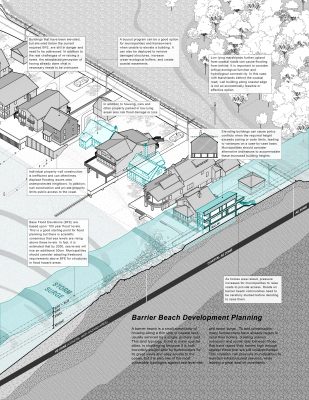
Marsh Resilience Diagram 
Resilience Corridor Diagram 
REFERENCES
Sea Level Rise Public Meeting Materials - October 19, 2017: The public meeting included a 30-minute presentation, explaining the Executive Summary report (below). The webinar recording provides a more in-depth explanation of analyses and conclusions.
An Assessment of Long Island Sound Circulation and Storm Surge Model
Wave and Storm Surge Flooding in a Small Saltmarsh System
Simulation and Observation of Wind Driven Waves in a Fetch Limited Urban Estuary: Long Island Sound
An Assessment of Two Models of Wave Propagation in an Estuary Protected by Breakwaters
Coastal Storm Surge and Precipitation in Coastal Connecticut: A Preliminary Assessment
Bank Street-South Water Street Sea Level Rise Planning Project, New London, CT
Sea Level Policy White Papers – Released by CIRCA and UConn's Center for Energy and Environmental Law
- Floodplain Building Elevation Standards
- Height Restrictions on Elevated Buildings
- Sea Level Rise Policy & Planning Recommendations: a presentation by William Rath, Esq., Legal Research Fellow, Center for Energy & Environmental Law, UConn School of Law
TOOLS
This map viewer shows the entire Connecticut river network where points can be clicked on to display graphs showing the 100 and 200 year return period volumetric flow rates.

REFERENCES
Municipal Issues & Needs for Addressing Climate Adaptation in Connecticut
Authored by:
Bruce Hyde, UConn Center for Land Use Education and Research and UConn Extension
Juliana Barrett, Connecticut Sea Grant College Program and UConn Extension
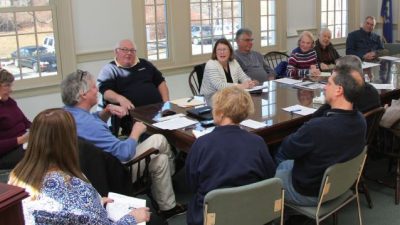
Law & Policy White Paper Series - Released by CIRCA and UConn's Center for Energy and Environmental Law (CEEL)
2018 Connecticut Sea Level Rise Legislation
CIRCA's report, Sea Level Rise and Coastal Flood Risk in Connecticut published in 2018 provides the basis for sea level rise projections in Governor's Bill S.B. 7, which was introduced into the 2018 legislative session and was enacted into law as Public Act 18-82.
Senate Bill No. 7, Public Act No. 18-82 - AN ACT CONCERNING CLIMATE CHANGE PLANNING AND RESILIENCY. PA 18-82
Substitute Senate Bill No. 9, Public Act No. 18-50 - AN ACT CONCERNING CONNECTICUT’S ENERGY FUTURE. PA 18-50
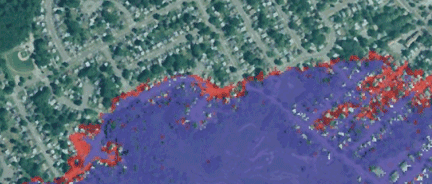
FEATURED TOOL
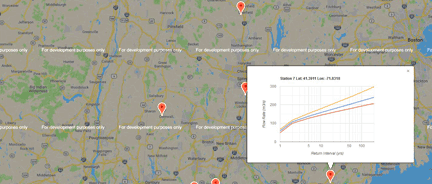
FEATURED TOOL
River Flow Rates Map Viewer
Interactive graphs of return interval for flow rates on Connecticut river networks

FEATURED REFERENCE

Featured Reference
Municipal Issues & Needs for Addressing Climate Adaptation in Connecticut
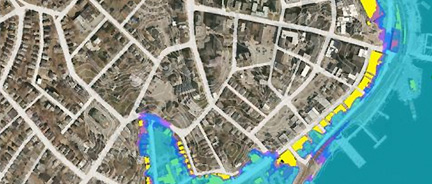
Featured Reference
New London Case Study
UConn landscape architecture team develops models for coastal resilience along historic waterfront
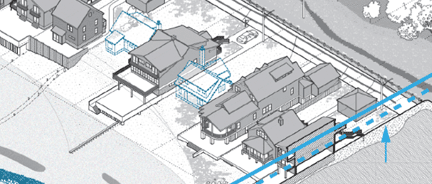
Featured Reference
Visualization Tools for
Sea Level Rise
Three resilience scenarios or drawings for communication and planning that depict sea level rise and flooding problems common in many coastal towns.
Researchers & Staff Support
James O’Donnell, UConn, Marine Sciences, UConn CIRCA
Emmanouil Anagnostou, UConn, Civil & Environmental Engineering
Christine Kirchhoff, UConn, Civil & Environmental Engineering
Amy Burnicki, UConn Civil & Environmental Engineering
Joe MacDougald, UConn Law School, Center for Energy and Environmental Law
William Rath, CEEL, UConn School of Law
Juliana Barrett, Extension, CT Sea Grant, UConn CLEAR
Bruce Hyde, Extension, UConn CLEAR
Peter Minutti, UConn NRE
DeAva Lambert, CT DEEP
Rebecca A French, UConn CIRCA
Katie Lund, UConn CIRCA
Funding
Work was made possible through a Municipal Resilience Planning Assistance grant from the State of Connecticut Department of Housing CDBG-Disaster Recovery Program and the US Department of Housing and Urban Development.
